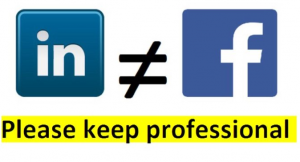5 PR Tips to Help Your Company Thrive in 2024
Strategic public relations plays a vital role in fostering positive relationships with key stakeholders, whether it is investors, customers, strategic partners, or employees. Getting the right message to the right audience is paramount to any successful outreach campaign.
Limited attention spans coupled with crowded marketplaces and platforms have made it difficult to effectively deliver value propositions. To help companies cut through the clutter and resonate with audiences, consider these five tips for developing and implementing successful communications strategies.
- Streamline key messaging. Organizations are always competing for the same share of voice, whether it is aimed at customers or investors. Platforms are just too “noisy,” and messaging is not getting through, resulting in lost opportunities. Target audiences must be clearly defined along with extremely focused corresponding talking points to impact relevant stakeholders.
- Engage influencer marketing. Once thought only for consumer products, influencers are developing sought-after b2b followings on a range of diverse topics, from AI to telecommunications. With the increasingly difficulty of earned media coverage, successful PR professionals are collaborating with these thought leaders for building corporate and brand awareness and engagement.
- Don’t forget about corporate social responsibility. This is still relevant, especially since companies embracing ESG and CSR initiatives will be competitive leaders and drive long-term value creation. Deploying ESG and corporate social responsibility programs enhance corporate and brand reputation, as well as help drive tangible business opportunities.
- Utilize data analytics and SEO. The ongoing shift toward digital platforms and SEO integration should be mainstays to any corporate communications program. From improved visibility to lead generation, optimized content – organic and paid – attracts traffic to websites and helps organizations achieve greater ROI.
- Leverage non-traditional channels. Organizations should think outside the box to identify PR opportunities. Product placement tie-ins and even realty television may be applicable for certain brands and companies. Retail investing also has surged in popularity. A range of high-traffic platforms that cater to individual investors have emerged and are actively on the lookout for new investment ideas.
Investing in strategic public relations builds credibility, trust and brand reputation through effective storytelling. Shaping smarter and more targeted narratives cultivates strong relationships with key stakeholders that achieve real results, from building awareness to enhancing shareholder value.
George Medici, gmedici@pondel.com












